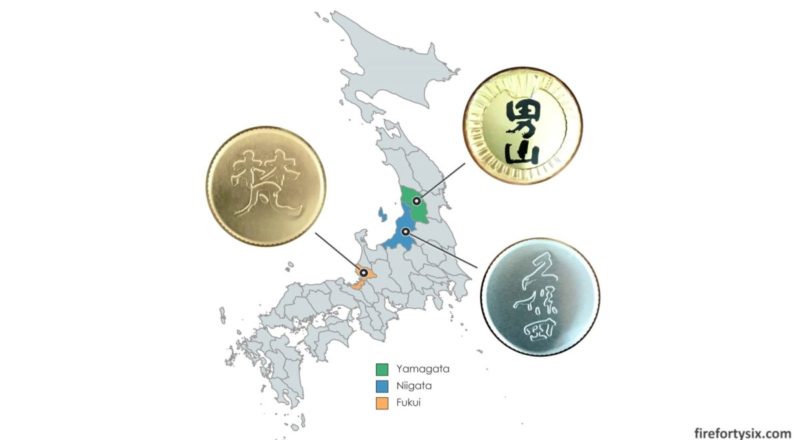Continuing our sake discovery journey, we bought three different bottles of sake produced by breweries in three different Japanese prefectures made with three different types of rice.
Based on the various bottles we’ve had so far, our favourite has been the Kamoshibito Kuheiji “Eau du Désir” Junmai Daiginjo (醸し人 九平次 純米大吟醸), a delicate, fruity and oh so easy-to-drink sake made in Aichi prefecture using Yamadanishiki rice.
We liked it so much that, after finishing our first bottle, we bought another two and kept them in the fridge so that we could open one anytime we felt like treating ourselves, and still have another bottle to spare.
Otokoyama Junmai Ginjo Sakemirai (男山 酒未來 純米吟釀)
Encouraged by the positive find, we tried the Otokoyama Junmai Ginjo Sakemirai (男山 酒未來 純米吟釀) next. I had high expectations for this bottle because it originated from same prefecture (Yamagata) as the iconic Juyondai (十四代)and heavily marketed as using the same Sakemirai rice.




Unfortunately, it didn’t quite live up to its hype, because it was nowhere near the Juyondais I’ve had before. It was slightly dry and gave off a nice aroma, but it was not as smooth as I’d hoped.
Perhaps it was just a matter of unrealistic expectations. The Otokoyama was more ten times cheaper than any Juyondai, so from a cost-adjusted basis, it was well worth its price.
Born Junmai Daiginjo Gold (梵 無濾過 純米大吟釀)
The following month, having tempered our expectations somewhat, we opened the Born Junmai Daiginjo Gold (梵 無濾過 純米大吟釀), made in Fukui prefecture using Yamadanishiki rice.
It came in a clear bottle which showed off the golden hue of the sake inside, matching its name. And just to be sure, a golden label was used (with shiny gold lettering no less!) and the bottle was sealed with a, you guessed it, golden cap.




My first impression was that it was all a bit too kitschy, but I suppose Born wanted to make sure that people were aware that this was a muroka (無濾過) sake that didn’t undergo charcoal filtration.
I didn’t have high hopes for this bottle, but boy was I proven wrong!
Our first hint was when we stuck our noses into the wine glass and took our first whiff. It smelled sweet and fruity with a underlying note of honey, and hinted at a delicious tasting glass.
But we’ve been fooled before, by bottles of sake and wine that smelled fantastic but tasted anything but, and moderated our expectations as we sniffed it a couple more times.
When we finally took our first sip, we were immediately sold. It tasted exactly as it smelled, with a long and lingering aftertaste and no hint of any alcoholic bite, even though the ABV was 15.5%.
We also had it with a homemade rice bowl over lunch, and it held up surprisingly well, probably due to the added muroka robustness.
The Wife declared this her favourite bottle so far, edging out the Kuheiji. For me, the Kuheiji still comes out on top, but when paired with food, I’d probably go with the Born Gold.
It was interesting to note that the two bottles had a lot of similarities. Both were made with Yamadanishiki rice with similar SMV (Born Gold +1, Kuheiji +0) and Acidity (Born Gold 1.6, Kuheiji 1.7).
Kubota Junmai Daiginjo (久保田 純米大吟釀)
A few weeks later, we opened the Kubota Junmai Daiginjo (久保田 純米大吟釀), brewed in Niigata using Gohyakumangoku rice.




It was fragrant and light, with an interesting aftertaste that reminded The Wife of the saffron Turkish delight that we had recently from Shalaby Sweets. The body was quite light and there was a slight tinge of alcohol.
Compared to most of the bottles we’ve had, this was quite high up in our list, though it didn’t match up to the Kuheiji or Born Gold. But the Kubota had one clear advantage — it was much more common in retail stores and restaurants, and hence more readily available. You’re much more likely to find the Kubota than the other two.

Here’s a simple table listing the key specifications of each of the three bottles:
| Otokoyama JG Sakemirai | Born JDG Gold | Kubota JDG | |
|---|---|---|---|
| Brand | Otokoyama | Born | Kubota |
| Category | Junmai Ginjo | Junmai Daiginjo | Junmai Daiginjo |
| Polishing | 55% | 50% | 50% |
| Prefecture | Yamagata | Fukui | Niigata |
| Rice | Sakemirai | Yamadanishiki | Gohyakumangoku |
| SMV | +3 | +1 | +1 |
| Acidity | 1.2 | 1.6 | 1.3 |
| Alcohol | 15-16% | 15.5% | 15.0% |
Based on our preferences so far, it does seem like we have a bias for low SMV, high acidity sakes made with Yamadanishiki rice, though we haven’t sampled widely enough to make a strong judgement call yet. Likewise on the choice of prefectures, especially since there are so many in Japan.
Looks like we just have to keep drinking and comparing in order to gather enough samples to make a statistically significant decision. In moderation of course, and reasonably spaced out over time.
Note: This post contains affiliate links. If you use these links to buy something, I may earn a commission. Thanks.
